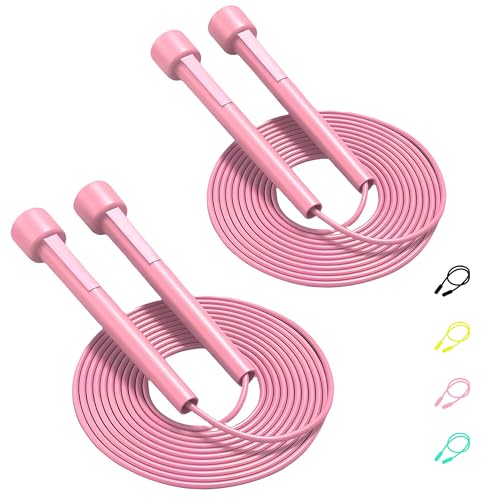Understanding the Benefits of Using a Skipping Rope: Get Fit and Have Fun
Why Skipping Rope?
Using a skipping rope is not just a means to exercise; it’s an enjoyable activity that can bring numerous benefits to our fitness journey. Imagine having the ability to perform a full-body workout in a matter of minutes, all while improving coordination and balance. When we skip, we engage multiple muscle groups: our legs, arms, and core all work together, which can lead to improved muscle tone. Not only does it help us burn calories effectively, but skipping is also a great way to enhance cardiovascular fitness, making our hearts healthier with every jump.
The Fun Factor
Skipping rope isn’t just about fitness; it’s fun and stimulating. Picture yourself in a park or at home with music playing in the background. The rhythmic sound of the rope hitting the ground combines with upbeat tunes, creating an enjoyable atmosphere. This makes workouts feel less like a chore and more like a game, allowing us to stick to our fitness goals and potentially inviting friends to join in the fun.
Choosing the Right Skipping Rope for Your Needs: Material, Size, and Design
Material Matters
When picking out a skipping rope, we need to consider the material, as it can affect both the feel and effectiveness of our workout. For instance, a PVC rope is lightweight and great for speed, making it perfect for quick workouts or tricks. On the other hand, a weighted rope adds resistance, providing a more intense workout and helping to build strength. If you’re uncertain, a basic, lightweight polymer rope is a good starting point.
Finding the Right Size
The size of the skipping rope is crucial for our comfort and performance. To find the right size, we can step on the middle of the rope and pull the handles up towards our armpits. The handles should reach this point; if they’re too short or too long, we might struggle during our workouts. Adjustable ropes are a versatile option as they cater to varying heights and preferences.
Design Considerations
Rope design can also influence our skipping experience. Look for ropes that offer comfortable grips. Some ropes come with padded handles that feel nice in our hands even during long sessions. Also, consider the type of bearings in the handles; good bearings allow the rope to spin smoothly and reduce fatigue.
Techniques for Skipping: Tips for Beginners and Advanced Users
Getting Started: Basic Techniques
For beginners, mastering the basic jump is essential. We should stand with our feet together and the rope behind us. As we swing the rope over our heads, we jump with both feet together, landing softly to absorb the impact. Keeping our elbows close to our sides and using our wrists to swing the rope promotes better control and rhythm.
Progressing to Advanced Techniques
Once we’ve got the basic jump down, we can move on to advanced techniques. Tricks like double unders, where the rope passes under our feet twice for every jump, challenge our timing and coordination. Turning the rope in different directions or incorporating crisscross jumps can also add variety to our routine.
Incorporating Skipping into Your Fitness Routine: Workouts for Every Level
Beginner Workouts
For those just starting out, integrating skipping can be simple yet effective. We can start with short bursts of 30 seconds of skipping followed by short breaks. Gradually, we could build up to multiple rounds while mixing it with other exercises like push-ups or squats, turning it into a complete workout.
Intermediate to Advanced Workouts
As we gain skill and endurance, we can combine skipping with high-intensity interval training (HIIT). A routine might consist of alternating between 1 minute of skipping, followed by other exercises like burpees or mountain climbers. This not only enhances our cardiovascular fitness but also promotes strength and endurance.

































